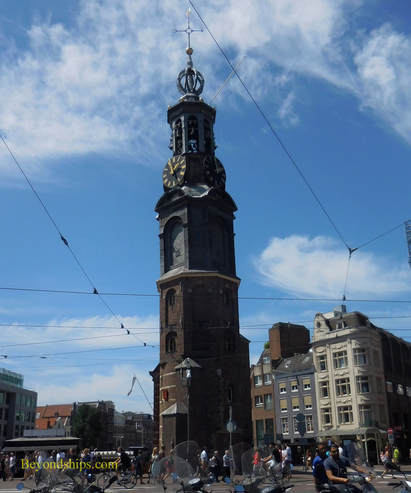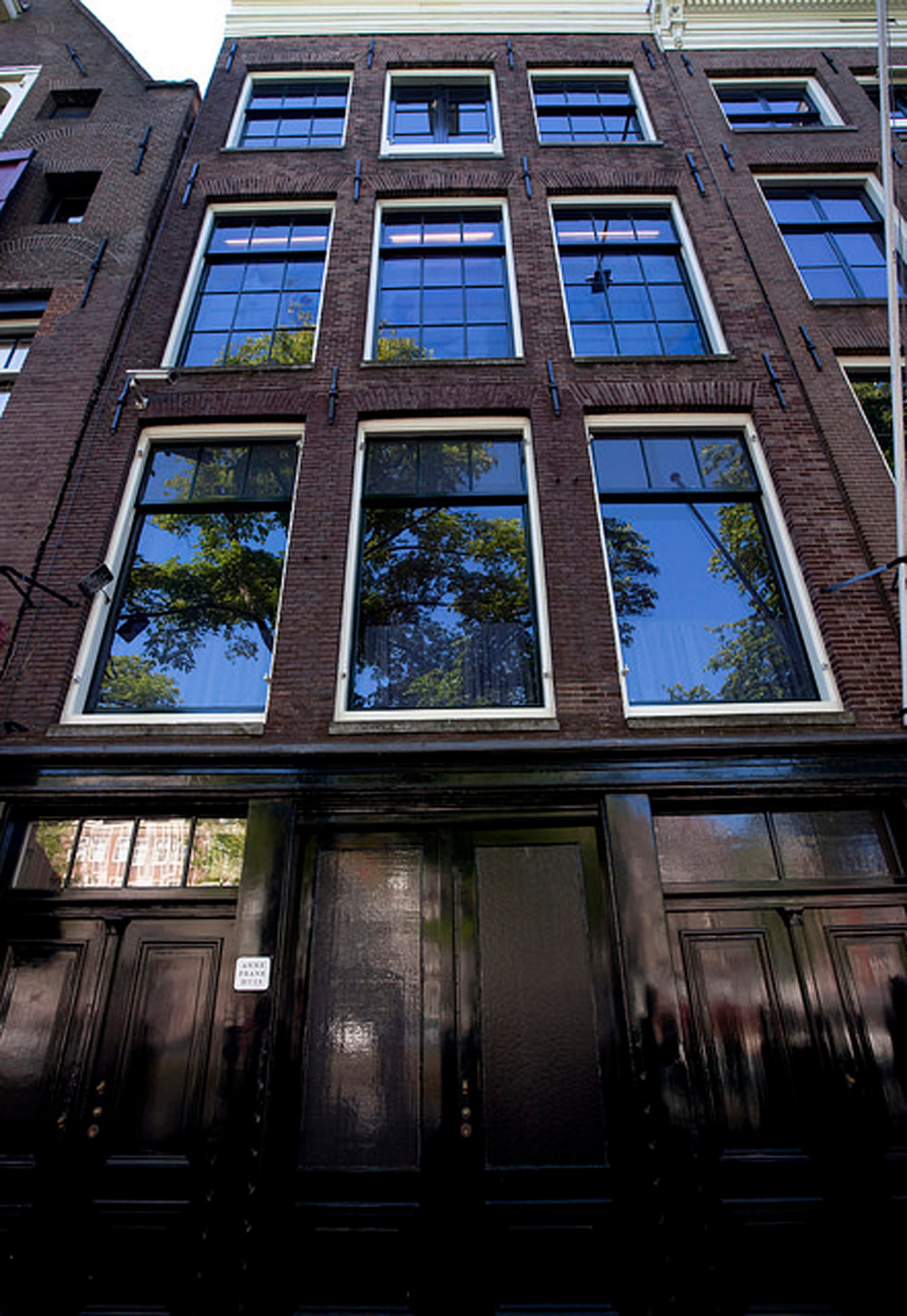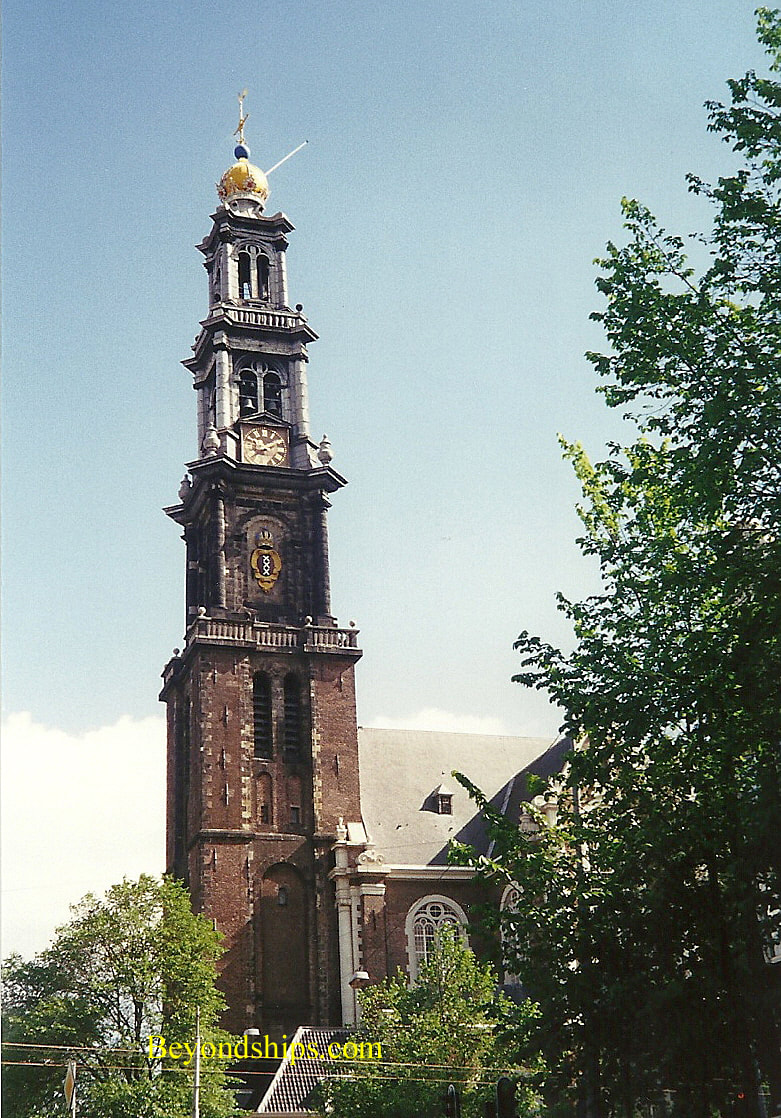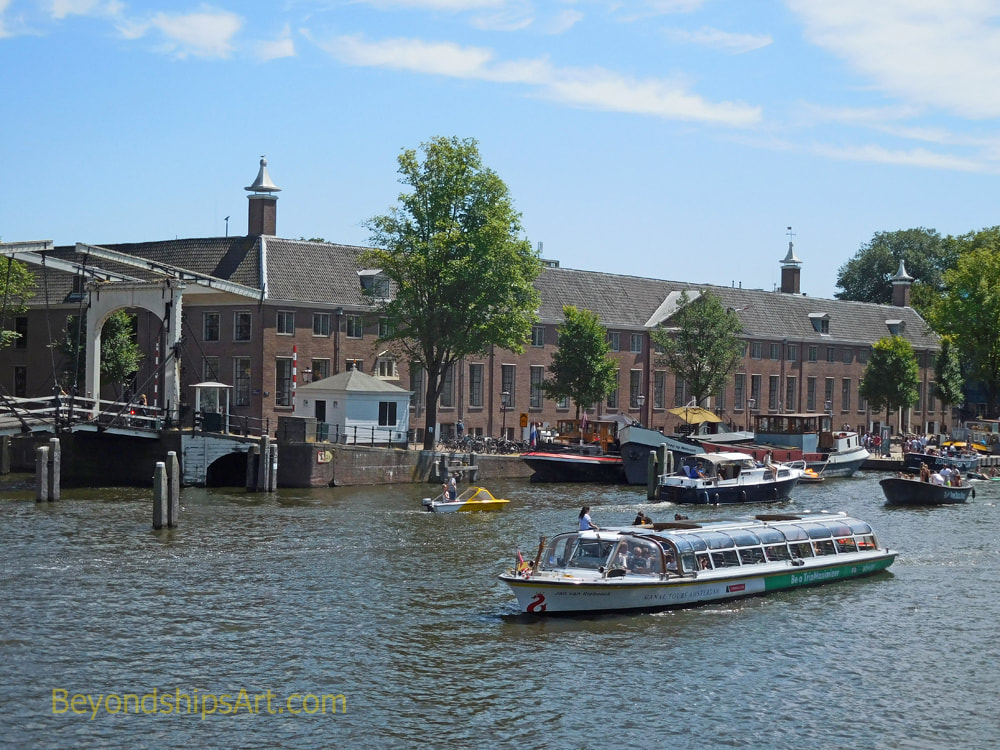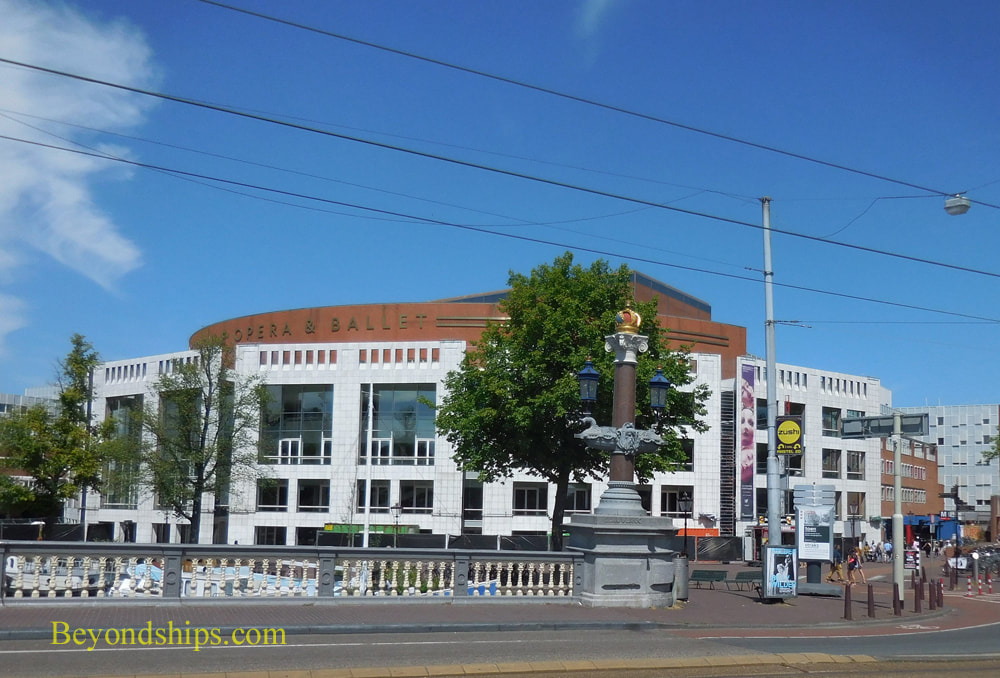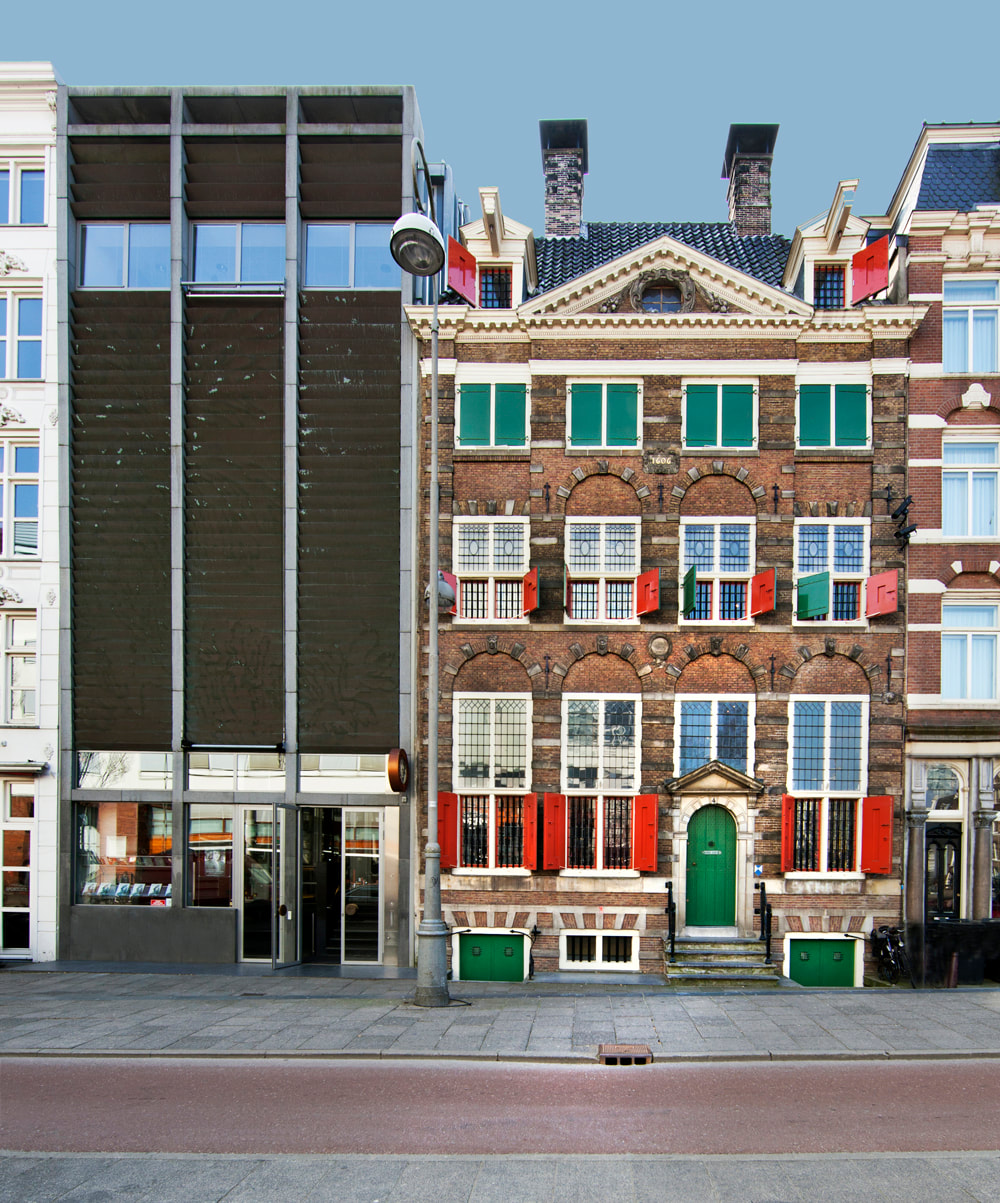Amsterdam Overview
Amsterdam Attractions
Amsterdam Canals Pictorial
Hermitage Amsterdam
Rembrandt House
Rijksmuseum
Stedelijk Museum
Van Gogh Museum
Rotterdam cruise port
Amsterdam Attractions
Amsterdam Canals Pictorial
Hermitage Amsterdam
Rembrandt House
Rijksmuseum
Stedelijk Museum
Van Gogh Museum
Rotterdam cruise port
|
CRUISING TO THE NETHERLANDS:
AMSTERDAM ATTRACTIONS
|
Above: The Muntorren (Mint Tower) is the centerpiece of Muntplein (MintSquare). Although it looks like a church tower it is actually the remains of one of two towers that guarded one of Amsterdam's city gates. Constructed in the 1480s, the gate caught fire in 1618. All that remained was a portion of the west tower and the adjacent the guard house. The tower was rebuilt in the Amsterdam Renaissance style and includes a clock and a clarion with 31 bells. The guard house, which was used as a mint in the 1670s, was rebuilt in the 19th century.
|
Anne Frank House
|
The Anne Frank House is one of the most visited venues in Amsterdam. It includes the building in which the young Jewish diarist hid for two years in an unsuccessful effort to escape persecution by the Nazi authorities.
The building was built as a private residence in 1635. However, beginning in the 19th century, it was used for commercial purposes as a warehouse and offices. Following the German invasion of Holland in 1940, Otto Frank moved his company to this building. Together with four other Jews, his family took refuge in a hidden back section of the building. They lived there for two years until they were anonymously betrayed to the Nazis. After the war, Otto, the only survivor, published the diary that his youngest daughter Anne had written while the family was in hiding. It became an international best seller. Thousands of visitors to Amsterdam began to come to the building and were given informal tours by the employees who had sheltered the Franks. However, a developer purchased the building in 1955 with the intent of building a factory. However, an international protest saved the building from demolition and it was gifted to the Anne Frank Foundation to become a museum. The museum includes the building that housed the Franks and the neighboring building. Its mission is “to show what happened during the Second World War and the Holocaust, and to offer insights into how this could have happened and what it means for us today.” It wants “visitors to the house to reflect on the suffering of the Holocaust, but also want[s] to inspire them to actively combat prejudice and discrimination. |
Above: The Anne Frank House Museum. (Image courtesy of the Anne Frank House Museum).
To this end, visitors can see the place where the family hid and Anne wrote her diary. The original diary is on display as are other artifacts from that time. In addition, the museum has exhibits with photos and videos relating to persecution.
For more information on visiting, see the Anne Frank House website. |
Westerkerk
|
The Westerkerk built in 1631 was the first - - and remains the largest - - church in Holland to be built for Protestants. Its tower, called the Westtorren, is the highest church tower in Amsterdam at 286 feet. The tower has a clarion with 51 bells.
Located near the Anne Frank House, the tower of the Westerkerk is mentioned in Anne Frank's diary. |
Hermitage Amsterdam
Stathuis & Muzicktheater (Stopera)
|
Not far from the Hermitage Amsterdam is the Stathuis and Muzicktheater. This building is an usual combination - - a city hall and an opera house. When this concept was adopted by the city government in the 1970s, it was met with considerable protest because its modern design was not in keeping with the neighbor. This led to the slogan “Stop the Opera” and the nickname “Stopera.” (The nickname can also be viewed as a contractions of Stathuis and Opera.”). The opera house portion of the building opened in 1986 and the city hall portion opened in 1988.
|
Rembrandt House Museum
|
Not far from the Stathuis is the Rembrandt House Museum. It occupies a house that was once owned by the great artist with rooms restored to how they looked in Rembrandt's day. It also has exhibitions relating to Rembrandt. (See separate profile).
|
Above: The Rembrandt House Museum (Image courtesy of the Rembrandt House Museum).
|
|
|
|
Cruise destinations - Netherlands - Amsterdam - Attractions - page 2
